

Infographic: Write It Down. Kid Makes a Succesful Rube Goldberg Monster Trap [video] A cardboard arcade made by a 9-year-old boy. INFOGRAPHIC: Gaming in the Classroom: Why Bring Electronic Games into the Classroom? Gaming, wikis, blogs, social media, interactive polls and QR codes: just some of the technologies that teachers are bringing into the classroom.

The dizzying pace of tech evolutions offers some challenges as teachers and administrators race to keep up with the latest tools. The research discussed here shows the payoff for schools that become "friends" with educational gaming. Experiments show how technology supports learning, with the potential to increase student engagement and motivation, even for students enrolled in college online. Games target all kinds of subjects and age groups, with different types of gaming from strategy to simulations to hard-core curriculum topics. Teachers can access an arsenal of tools, from game consoles to laptops to smartphones.
Still, the U.S. government reports a lack of nationwide studies on the use of tech tools and gaming in education. Heard It All Before? A New Age of Lectures. Posted on Tuesday April 23, 2013 by Staff Writers “A lecture is much more of a dialogue than many of you probably realize.” — Harvard University professor George Wald “Before I came here I was confused about this subject.
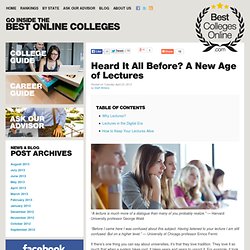
Having listened to your lecture I am still confused. But on a higher level.” — University of Chicago professor Enrico Fermi. Our Digital Portfolio Project. A Step-by-Step Guide to the Best Projects. Manor New Technology High School in Manor, Texas, is a 100 percent project-based learning school.
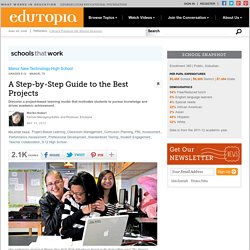
They are part of the New Tech Network of schools and their approach has yielded remarkable results, including a 98 percent graduation rate, with all of their graduates accepted to college. Six Scaffolding Strategies to Use with Your Students. PBL and Standardized Tests? It Can Work! It's never too late to address this subject.
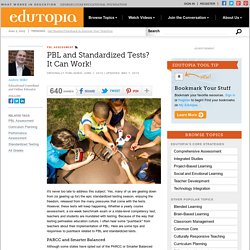
Yes, many of us are gearing down from (or gearing up for) the epic standardized testing season, enjoying the freedom, released from the many pressures that come with the tests. However, these tests will keep happening. Whether a yearly course assessment, a six-week benchmark exam or a state-level competency test, teachers and students are inundated with testing. Project Essentials Checklist. Project-Based Learning from Start to Finish. Steven: I was a bad student.
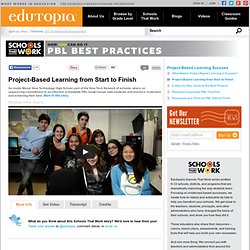
Skipped school quite a bit, and I really didn't find education exciting until I got to college, because then I got to control how I was going to learn. Don't forget! - Template. Print Email Details Written by Melanie Day Published: 06 September 2011.
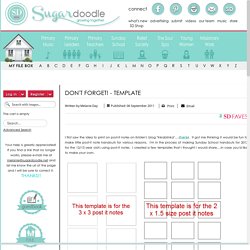
That's Funny: Comedy Across the Curriculum. Dimitrios Kambouris/Getty ImagesStephen Colbert and Jon Stewart onstage at the inaugural Comedy Awards.Go to related article » Comedy is news this month, with the 20th anniversary of Comedy Central, the publication of Tina Fey’s “Bossypants,” Will Ferrell’s new role on “The Office,” Trey Parker and Matt Stone’s “The Book of Mormon” on Broadway, and at least one legless reptile on Twitter.
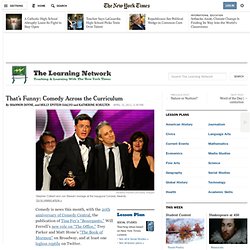
Whether simply using an Onion news headline as a quick warm-up in history class or creating a full unit in which students write and perform comedic works of their own, humor can be woven in across the curriculum — to enrich literacy skills, spark creativity, teach critical analysis or just to have fun. How have you taught with comedy? Key Questions What purposes does comedy serve? Activity Ideas. 5 Tools to Help Students Learn How to Learn. Helping students learn how to learn: That’s what most educators strive for, and that’s the goal of inquiry learning.
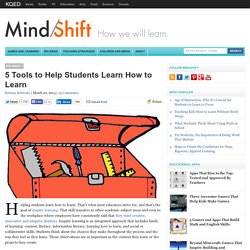
That skill transfers to other academic subject areas and even to the workplace where employers have consistently said that they want creative, innovative and adaptive thinkers. Inquiry learning is an integrated approach that includes kinds of learning: content, literacy, information literacy, learning how to learn, and social or collaborative skills. Students think about the choices they make throughout the process and the way they feel as they learn. Those observations are as important as the content they learn or the projects they create. “We want students thinking about their thinking,” said Leslie Maniotes a teacher effectiveness coach in the Denver Public Schools and one of the authors of Guided Inquiry: Learning in the 21st Century.
Projects and Partnerships Build a Stronger Future. An ACE student works on his project design.
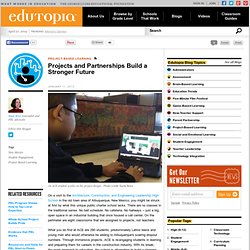
Photo credit: Suzie Boss On a visit to the Architecture, Construction, and Engineering Leadership High School in the old town area of Albuquerque, New Mexico, you might be struck at first by what this unique public charter school lacks. There are no classes in the traditional sense. The Baker Laboratory. Tinberg, C.E., Khare, S.D., et al.
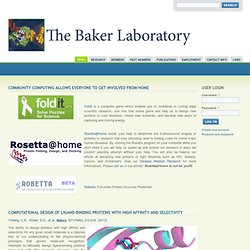
Nature. 501(7466), 212-216. (2013) The ability t. Graphic Organizers. ‘Faking It’ at the Met, a Photography Exhibition. That photograph is one of more than 200 on display in “Faking It: Manipulated Photography Before Photoshop,” an absorbing if not revelatory exhibition at the . Organized by Mia Fineman, an assistant curator in the museum’s department of photography, the show offers abundant evidence that photographers have been cheating since shortly after the medium’s invention almost two centuries ago. The types of images Ms. Why School Should Focus on Engagement Instead of Lectures. Each school day, millions of students move in unison from classroom to classroom where they listen to 50- to 90-minute lectures. Despite there being anywhere from 20 to 300 humans in the room, there is little actual interaction. This model of education is so commonplace that we have accepted it as a given. RESPONSIBLE THINKING. Critical thinking web.
Teacher uses rap to help second-graders learn grammar, science, math. SCIM-C: Historical Inquiry. SoundGecko. Thousands of Video Lessons on Every Subject. Building Good Search Skills: What Students Need to Know. Don't forget! - Template. Junior High School Teacher Fired for Students’ Political Cartoons. 11 Yr Old Teacher! Amazing!! Teaching Channel: Argument: Birmingham Jail, Soc. Sem, Writing. Examples Map. A whole child approach to education ensures that each child, in each school, and in each community is healthy, safe, engaged, supported, and challenged. With this interactive map tool, find examples of schools and communities worldwide that are implementing a whole child approach to education. The schools and communities highlighted on this map were identified by ASCD or our Whole Child Partner organizations and reflect a commitment to a whole child approach put into practice.
Each example highlights a program, focus, or achievement with links to more information. Popular Searches Recent entries Community-based projects where students have active leadership roles Understanding development needs of middle grades students to engage them in learning.